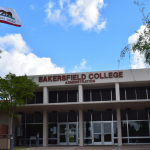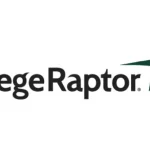These are challenging times for higher education. The financial model that has been foundational for colleges and universities for much of the past 70 years is under severe stress. Enrollments are down – and not just in the short-term. They are projected to be down even further in the longer-term due to demographic changes. With enrollments being one of the bigger drivers of funding and financial viability, this is obviously cause for concern.
A close secondary challenge is the urgency for greater efficiency – the need to reduce costs and maximize resources – at both the departmental and institutional level.
Yet, there are opportunities. A holistic and personalized approach to student engagement is one way colleges can respond to these two challenges. Enrollment and efficiency challenges are in many ways engagement challenges.
Success hinges on getting the “foundational approach” right, and having an engagement platform through which you can leverage your existing (and potentially future) systems.
Foundational Elements
Three foundational elements of a successful engagement strategy include:
Mobile-First
There is often a major disconnect between the tools students are using and the tools schools are using to support them. So much primary communication today continues to be through email. Yet, text messages have a 98% open rate vs. 20% open rate for email. The idea of “in-person office hours” is becoming antiquated – driven both by the pandemic and also shifting student expectations. Students may not be able to connect with their institution during the traditional 9-5 work-day as students increasingly have obligations other than school (job, family, military, etc.) during those hours.
Personalization
Effective student engagement requires speed and connectivity. You need to leverage what you know about your students. Yet, so much knowledge is spread across the university – across various departments and siloed systems. It can be very hard to leverage that collective information, bring it together, get the right messages into the hands of students and move them forward. Leveraging secure technologies that can pull/push data across these various systems can help break down these silos.
Sustainability
Piece-meal solutions may cause more headaches. For student engagement to be effective, it needs to be sustainable. Half-measures and piece-meal solutions may or may not be effective. They will fail if they raise expectations and don’t deliver. For example, sending out a bunch of text messages to engage students may feel like a “win”, but if a portion of the recipients respond with texts or questions and no one is available to respond, you have not succeeded in driving engagement – and student frustrations grow.
Leveraging Existing Systems and Data
You have likely made a significant investment in larger enterprise systems. You may love your existing technology. And, equally, it may frustrate you at times or not do all that you want it to do. There are two key opportunities to look out for here:
Getting the Most out of Your Large SIS, LMS, and FAMS
The enterprise ecosystem of Student Information Systems, Learning Management Systems, and Financial Aid Management platforms are, by definition, constrained. These systems are great for their intended purpose of housing back-end data, and some have functionality to send out alerts, but they are not designed to be the conduit that drives student engagement. Focus on what you have here: great data and portals. Pair these systems with other technologies, such as a dedicated student engagement platform, to measure student engagement across various platforms to be leveraged for more effective communication with students.
Finding Ways to Take Your CRM to the Next Level
CRMs have data too. Your CRM has a great starting point for communication with prospects and students. Some of the more advanced CRMs have technologies that support texting. However, a challenge with some of these technologies is that they require work and sustained effort to be successful. But, on the positive side, they often have an ecosystem. Think of SalesForce’s AppExchange, for instance. A variety of plug-ins from 3rd parties are available to create work-flow automation, content repositories, and other tools that can work both in concert with the CRM, giving you the best of both worlds.
The Wrap: A Platform to “Scale the Personal Touch”
Creating an effective student engagement ecosystem requires the right content, access to data, and tools to communicate across various channels: text, email, AI chat, and AI-powered live chat. It sounds like a lot. The truth is that there is disruptive AI technology that uses machine learning, predictive analytics, and natural language processing that makes student engagement easier than it has ever been, and more affordable. That is where Ocelot comes into the picture.
We envision an enterprise-wide AI-powered engagement platform that is easy for staff to use, is flexible, and can leverage the data from your existing systems. We believe this is the technology that accelerates digital transformation and drives true student engagement.
In simple terms, think of it as a supplemental extension that can provide an improved experience across your existing ecosystem of solutions. It can give your team tremendous control, with easy access to dashboards, metrics, and historic and templated campaigns. Leveraging the tools in the Ocelot platform can provide a truly 24-7 enterprise-wide experience for students. Flow the data gleaned from student interactions via the Ocelot Platform into other systems. Pull in the data you need from other systems to elevate student engagement initiatives when you need it. Ultimately, help yourself and your institution provide students the support and access they need to succeed.
















